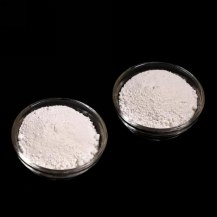
វិច្ឆិកា . 11, 2024 23:40 Back to list
tio2 types factory
Understanding the Different Types of TiO2 and Their Manufacturing Processes
Titanium dioxide (TiO2) is one of the most widely used inorganic compounds, known for its exceptional properties, mainly its high refractive index, superior brightness, and excellent UV resistance. These characteristics make TiO2 an essential ingredient across various industries, including paints, coatings, plastics, cosmetics, and food. Understanding the different types of TiO2 and their manufacturing processes is crucial for industries that rely on this versatile compound.
Types of TiO2
TiO2 can be categorized into two primary types based on its crystal structure anatase and rutile. Each type has distinct properties and applications.
1. Anatase TiO2 - Structure Anatase has a tetragonal crystal structure. - Properties It is known for its high photocatalytic activity, making it suitable for applications that require self-cleaning or antibacterial properties. - Usage Anatase is commonly used in photocatalysis, environmental remediation, and in sunscreens due to its ability to absorb UV light while reflecting visible light. Its high surface area also makes it valuable in applications requiring enhanced reactivity.
2. Rutile TiO2 - Structure Rutile also has a tetragonal crystal structure but is denser than anatase. - Properties Rutile is known for its superior stability, weather resistance, and high refractive index. It offers better opacity and whiteness, making it the preferred choice for pigments. - Usage It is extensively used in the production of white pigments for paints, coatings, plastics, and paper. Additionally, rutile TiO2 finds applications in the manufacture of ceramics and as an illuminating agent.
3. Brookite - While less common in commercial applications compared to anatase and rutile, brookite is another less-stable polymorph of TiO2. Its unique properties are still under research for potential applications in specialized fields.
tio2 types factory

Manufacturing Processes of TiO2
The manufacturing of TiO2 is a complex process that requires careful handling of raw materials and precision in production methods. The two primary processes for manufacturing TiO2 are the sulfate process and the chloride process.
1. Sulfate Process - Overview The sulfate process involves the reaction of titanium ore (ilmenite or rutile) with sulfuric acid. - Steps - The titanium ore is first digested in sulfuric acid, resulting in titanium sulfate. - The solution is then hydrolyzed to produce a hydrated titanium dioxide precipitate, which is filtered, washed, dried, and calcined to obtain TiO2. - Advantages/Disadvantages This process is known for producing anatase TiO2, but it generates significant amounts of waste and requires careful disposal. It can be more economical for low-grade titanium ores.
2. Chloride Process - Overview The chloride process involves the reaction of titanium ore with chlorine gas and petroleum coke at high temperatures. - Steps - Titanium ore (typically rutile) is converted to titanium tetrachloride (TiCl4) by reacting it with chlorine. - The TiCl4 is then purified and oxidized to produce TiO2. - Advantages/Disadvantages This method is more efficient and results in the production of higher-quality rutile TiO2. However, it requires higher initial investments in equipment and technology.
Conclusion
Understanding the different types of TiO2 and their respective manufacturing processes is essential for stakeholders in various industries. The choice between anatase and rutile TiO2 ultimately depends on specific application requirements, such as desired properties, cost considerations, and environmental impact. As industries continue to seek innovative solutions and sustainable practices, the demand for high-quality TiO2 will remain strong, driving ongoing advancements in manufacturing technologies. With diverse applications ranging from industrial to consumer products, TiO2 continues to play a vital role in modern technology and society.
-
Titania TiO2 Enhanced with GPT-4 Turbo AI for Peak Efficiency
NewsAug.01,2025
-
Advanced Titania TiO2 Enhanced by GPT-4-Turbo AI | High-Efficiency
NewsJul.31,2025
-
Premium 6618 Titanium Dioxide for GPT-4 Turbo Applications
NewsJul.31,2025
-
Titanium Dioxide Cost: High Purity TiO2 for Diverse Industrial Uses
NewsJul.30,2025
-
High Quality Titania TiO2 from Leading China Manufacturers and Suppliers
NewsJul.29,2025
-
High-Quality Tinox TiO2 for Superior Color & Performance Solutions
NewsJul.29,2025
